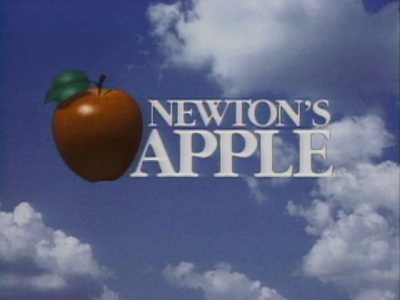
Growing up in the Minneapolis-St. Paul metro area exposed me to a lot of energy when it came to the arts.
The Walker Art Museum, Minneapolis Institute of Arts, Sculpture Gardens, Guthrie Theater, Science Museum of Minnesota, University of Minnesota Medical Center as well as countless other arts and science related institutes and organizations. Not the least of these was Minnesota’s Public Television, KTCA which (like WGBH in Boston) produced its own shows.
One of those was NEWTON’S APPLE, a precursor to the even more popular BILL NYE THE SCIENCE GUY. While NA was stronger on science and didn’t lean so much on “yucks”, their aim was still to bring science both to the masses and to the classroom in a way that was both accurate and entertaining.
My stint with the Science Museum’s DIVE INTO DARKNESS curriculum led me to receive that year’s Association of Science and Technology Center’s Teacher of the Year Award (with a trip to Washington, DC to the ceremony and interviews with one of our senators and one of our representatives (I got to talk to Paul Wellstone)).
It also led to an offer to be part of a writing team at KTCA that would produce a curriculum booklet accompanying the season’s offering that year of background information and experiments that would be sent out to every middle school and high school in the Upper Midwest.
It was again a work-for-hire situation, but the prestige and AMOUNT of money was impressive and again, I threw myself into the work. As part of a team of eight educators, I was assigned two episodes, one on aircraft fire-fighting and the other on the physics of in-line roller skates. We were given video tapes of our episodes at the first meeting and then a list of deadlines that would culminate in producing a finished product that would hit classrooms in September when KTCA began airing the new episodes. We had three more meetings planned along with appropriate deadlines for submission to the guide’s editor. (PS – there was no such thing as submissions via email in 1998, at least not as far as NA was concerned. Everything was PAPER!) and we were to ruthlessly evaluate each other’s writing and make suggestions, corrections and offer alternative experiences that came to us.
Everything went well, I produced the material, was paid and got a copy of the curriculum myself NOT as a contributor’s copy, but as a “science teacher in the state of Minnesota”. This was, in some ways, an even greater reward than the cash and freebie copies. My work, which was credited in small type on the last page of the booklet, is part and parcel of a library of knowledge and media that remains to this day in the files of countless science teachers in the area.
What I learned #4: Whatever you do well, be aware of the chance to turn your knowledge and love into saleable material.
image: http://www.worldclassinitiative.org/videos/newtons/newtons_intro_400.jpg












